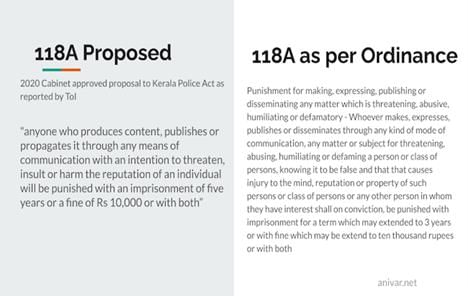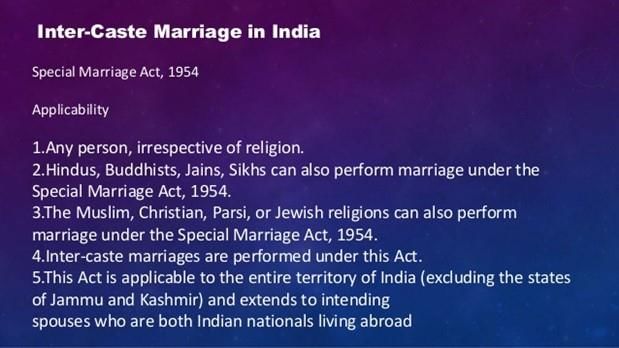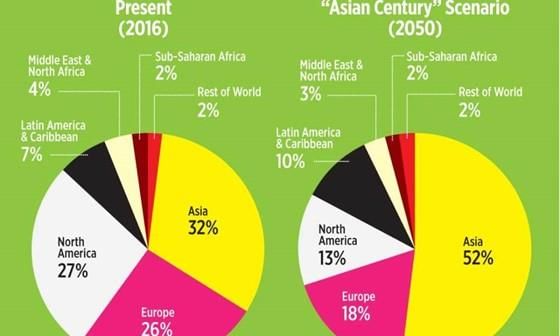The Hindu Editorial Analysis- 24th November, 2020 | Additional Study Material for UPSC PDF Download

1. OVERBROAD, OVERBOARD-
GS 2- Government policies and interventions for development in various sectors and issues arising out of their design and implementation
Context
(i) Kerala has sought to make amends by keeping in abeyance(hold) its obnoxious(bad) proposal to abridge free speech by conferring unbridled(unrestrained) powers on the police.
(ii) According to the ordinance, police could have arrested any one expressing or disseminating any matter deemed threatening, abusive, humiliating or defamatory to a person or a class of persons in any manner.
(iii) But Chief Minister Pinarayi Vijayan should take heed(take note) of criticism and drop the measure altogether.
(iv) It is worrying that such a draconian(harsh) and ill-conceived ordinance was even promulgated(publicized).
Guarding The Freedom Of Speeech
(i) It is incredible that a State government crafted a law with elements declared unconstitutional by the Supreme Court, ignoring a major apex court verdict on the law of defamation.
(ii) Proposed law which is repugnant(offensive) to the provisions of the IPC, a central law, in two ways, besides going against one provision in the Cr.P.C.
(iii) His defence that the amendment only targeted defamatory social media posts and would not curb reportage, political satire(comedy) or expression of opinion is quite hollow, when seen in the light of the absence of any such narrow definition of the offence introduced by Section 118A in the Kerala Police Act.
(iv) In Shreya Singhal vs. Union of India (2015), the top court struck down Section 66A of the IT Act.
(v) The section had criminalised the sending of any message through a computer resource that was grossly offensive, menacing(threatning), or caused annoyance, inconvenience, danger, insult, injury and intimidation(fear).
(vi) The Court found the offence was ‘overbroad’, that is, it was defined so widely that both innocent and offensive messaging could be brought under its ambit.
(vii) The failure to define the offence narrowly fell foul of the constitutional protection for free speech and expression.
(viii) The same judgment, for the same reason, also struck down Section 118(d) of the Kerala Police Act, which made causing annoyance in an indecent manner through verbal comments or on telephone an offence.
Bypassing Central Law
(i) The new offence is also vaguely defined, and is made cognisable, whereas criminal defamation under the IPC is non-cognisable.
(ii) Moreover, while upholding the validity of criminal defamation, the Court made it clear that no police officer can register an FIR for the offence; it can only be prosecuted as a private complaint.
(iii) For Sec.199 Cr.P.C. says no court shall take cognisance(take note) of defamation unless the aggrieved party files a complaint.
(iv) Further, Section 118A lays down a three-year prison term; it is two years under the IPC.
(v) By making defamatory utterances cognisable and raising the prison term, the Kerala ordinance effectively amends the IPC and Cr.P.C., a move for which the Centre’s assent is mandatory, as it is in conflict with central laws.
(vi) The ordinance itself required prior presidential assent.
Conclusion
It is regrettable that the State sought to arm itself with extraordinary powers to deal with a problem that can be dealt with through other provisions relating to stalking, harassment, criminal intimidation and verbal abuse.
2. A CONSPIRACY AGAINST INTER-FAITH LOVE-
GS 2- Government policies and interventions for development in various sectors and issues arising out of their design and implementation
Context
(i) In India, intermarriages between people of different regions, castes or religions have to a large extent been prevented by casteism, religious conservatism, and fear of parental authority.
(ii) In a country as large and diverse as this, intermarriages are still a rarity. There are few inter-caste marriages and even fewer inter-religious ones.
(iii) Surveys large and small confirm that the vast majority of Indians (between 95% and 99% depending on the State) have arranged marriages, which are, by nature, intra-caste and intra-religious.
(iv) Between 70% and 80% of Indians across all age groups and religions disapprove of inter-caste or inter-religious marriage.
(v) Those of us and our forebears(forefathers) who married across caste groups or across religious communities are a very small minority of around 5% and about 2%, respectively.
(vi) Yet, for decades, the Rashtriya Swayamsevak Sangh (RSS) has kept up an attack on the 2%, trying to prevent or break up marriages between Hindus and people of other faiths, primarily Muslims.
(vii) Despite all its very recent protestations to the contrary, the Sangh Parivar is known to hold that Muslims (and Christians), whose holy sites are outside India, are not truly “Bharatiya”.
(viii) Groups owing allegiance(closeness) to the Parivar scour court notices for marriages under the Special Marriage Act and use persuasion, threats, intimidation and even violence to try and stop marriages from taking place.
(ix) When Muslim women marry Hindu men (even abroad), they try to have them “convert” to Hinduism.

No Evidence Of ‘Love Jihad’
(i) But it is only quite recently that they conjured(produced) up a conspiracy theory in support of their campaign.
(ii) Starting in coastal Karnataka and northern Kerala in the mid-2000s, Sangh vigilantes(observers) claimed that Hindu-Muslim romances were a well-thought-out conspiracy to seduce Hindu women in order to convert them to Islam and produce Muslim children.
(iii) It was among these vigilantes that the term ‘love jihad’ was bandied about.
(iv) A Karnataka Criminal Investigation Department (CID) investigation into complaints of ‘love jihad’ in 2009 concluded that there was no ‘love jihad’, only love and marriage between consenting adults.
(v) But the conspiracy theory, and the term ‘love jihad’, were exported to north India in the run-up to the 2014 general election.
(vi) Over the next few years, as the Bharatiya Janata Party gained political ground, the term gained currency, adding another dimension to the Sangh Parivar’s programme of communal polarisation(division).
Need To Dismiss The Theory
(i) A National Investigation Agency (NIA) probe was ordered following continuing claims in Kerala in 2018.
(ii) In Uttar Pradesh, whose current Chief Minister issued a public death threat to men he claimed were involved in ‘love jihad’, the police investigated 14 complaints.
(iii) The NIA reached the same conclusion as the Karnataka CID did in 2009: there was no conspiracy to convert Hindu women, nothing called ‘love jihad’, all the women concerned had married and/or changed religions as independent thinking adults.
(iv) The U.P. police have found that the majority of the cases probed were consensual. And in the cases identified as ‘suspicious’ by the police, neither is there evidence of forcible conversion nor of the fact that the women did not make their own choices.
(v) But keeping the conspiracy theory alive seems to be an important part of the RSS-BJP’s communal political programme.
(vi) And so, under the guise(name) of anti-conversion laws, a few BJP State governments have now announced their intention to make ‘love jihad’, a conspiracy theory, a crime punishable by imprisonment.
(vii) The conspiracy theory has evolved along the way.
(viii) Its central premise is that no Hindu woman will fall in love with a man she knows to be a Muslim; Muslims disguise themselves as Hindus to get their way with obedient Hindu women and having ravished(molested) them, force them to convert.
Exercising Choice
(i) Characterising Hindu women as dim-witted(not clever) and easily led is socially more acceptable than the idea that a woman can love outside artificial social boundaries and exercise choice.
(ii) This is borne out by the many examples from across the country of parents using provisions of criminal law on rape and kidnapping to try and break up their daughter’s relationship or marriage, entered into by choice.
(iii) There are also examples from across the country of families that have conspired to murder their daughter or her husband or both, because their falling in love is an affront(attack) to family authority and to the social order determined by caste and religion.
(iv) The insidious(cunning) linking of inter-faith relationships with ‘forcible conversion’, however, gives this campaign a powerful toxicity(poison).
(v) The Supreme Court affirmed in the case of Hadiya (formerly Akhila) and Shafin Jahan that no one had a right to interfere in the marriage of consenting adults.
(vi) What the BJP State governments are proposing is a law that overturns this premise, by making the validity of a marriage subject to investigation on the basis of third-party complaints.
(vii) It makes every Muslim marrying a Hindu suspect. It characterises Muslims as conspirators in a project of proselytisation(conversion) and colonisation of Hindu wombs.
(viii) And it provides legal cover for Sangh organisations to carry on their decades-old campaign of harassment, and worse, against Hindu-Muslim marriages.
(ix) To be sure, the RSS and its affiliates have been able to pursue their flagrantly anti-constitutional and unlawful methods in trying to prevent inter-religious marriages because their agenda feeds the casteism and religious anxiety of the majority of Indians.
(x) This is why, all these years, they have had the easy support of court officials, the police, and in too many cases also the families of young people who have dared to love.
(xi) The changes in law proposed by a few BJP State governments, if they go through, will create a decidedly hostile legal environment for Hindus and Muslims to marry.
(xii) What is already difficult, because of family, community and Sangh Parivar pressures, will become impossibly hard.
Conclusion
(i) Nazi Germany’s Nuremburg laws prohibited(restricted) sexual relations and marriages between Jews and non-Jews.
(ii) Violation of the law led to imprisonment and later, incarceration(jail) in a concentration camp.
(iii) Segregationist(seperationist) U.S. and apartheid(racial discrimination) South Africa had laws prohibiting inter-racial marriages and sexual relations.
(iv) In South Africa, the law was enforced through surveillance and police raids. In both countries, violations were punishable by imprisonment.
(v) In India, the Sangh Parivar can achieve the same ends without a law explicitly banning such marriages, so long as those who are unable to see beyond caste and religion conspire in its plan.
3. TIME FOR AN ASIAN CENTURY-
GS 2- Bilateral, regional and global groupings and agreements involving India and/or affecting India’s interests
Context
(i) In an irreversibly(non-changeable) more equal world, the Regional Comprehensive Economic Partnership (RCEP) has immediate geopolitical and economic implications, with the West adapting to Asian rules and marking the end of the colonial phase of global history.
(ii) Will we see the world returning to the centrality of Asian civilisations sharing prosperity, with the U.S. adjusting to a triumvirate(three powerful entities)?
(iii) Or will the Asian giants be irreconcilable rivals with the U.S. rules-based order maintaining peace and prosperity?
(iv) India’s challenge is in securing an ‘Atmanirbhar Bharat’ in the emerging digital order, navigating the U.S.-China technology and supply chain clash.

Asian-Led World Order
(i) The mega trade deal was led by ASEAN, not by China, and includes Japan and Australia, military allies of the U.S., all opting for the Asian Century as they do not see China as a threat the way the U.S. does.
(ii) ‘ASEAN centrality’ rejects the current frame of the West setting the agenda.
(iii) RCEP’s principles and objectives allow individual countries to choose the scope and product categories for bilateral tariff schedules, and exclude divisive issues like labour and environment.
(iv) The new frame goes beyond transfer of goods and services, focuses on integration and facilitating supply chains for sharing prosperity, requiring a very different calculus for assessment.
(v) RCEP’s new rules on electronic commerce could offset losses in declining trade in goods.
Breaking The Monopoly
(i) ‘Atmanirbhar Bharat’ will leverage(take advantage) endogenous technological strength, data and population.
(ii) Both China and India are breaking the monopoly(domination) of the West in wireless telecommunications, AI and other emerging technologies.
(iii) India has also, in the UN, questioned Western domination calling for a “reformed multilateralism”.
(iv) The dilemma for the West is that sharing power will mark the end of its primacy in global affairs.
(v) The dilemma for the U.S. is more acute. With China having developed the capacity to bridge the technological gap, the U.S. weaponised interdependence by banning export of semiconductor chips and forcing sale of innovative Chinese technology.
(vi) China’s response is a ‘dual circulation’ strategy for self-reliance and military-technological prowess to surpass the U.S.
(vii) The global governance role of the U.S. is already reduced.
(viii) The U.S. Congressional Research Service report dated October 30 identifies four key elements of this role:
(a) global leadership;
(b) defence and promotion of the liberal international order;
(c) defence and promotion of freedom, democracy, and human rights; and
(d) prevention of the emergence of regional hegemons in Eurasia.
(ix) The U.S. now exercises power with others, not over them. Despite its military ‘pivot’ to Asia, the U.S. needs India in the Quad, to counterbalance the spread of China’s influence through land-based trade links.
(x) India, like others in the Quad, has not targeted China and also has deeper security ties with Russia.
(xi) With the ASEAN ‘code of conduct’ in the South China Sea, both the security and prosperity pillars of the U.S.-led Indo-Pacific construct will be adversely impacted.
Atmanirbhar Bharat
(i) No country has become a global power relying on others. India needs a new strategic doctrine and mindset.
(ii) Strategic analysts ignore the severity of colonial exploitation that made the most developed country, India, among the less developed when they compare it with China.
(iii) Military strategists’ excessive reliance on Western doctrines and equipment ignores why the 4th Infantry Division, described “as one of the greatest fighting formations in military history”, collapsed.
(iv) We have drawn the wrong lessons on both the intentions and capability of China (the Henderson-Brooks Bhagat Report remains classified, but its conclusions are available).
(v) With the Rafale aircraft purchase, India has recognised that there will be no technology transfer for capital equipment.
(vi) Military Theatre Commands should be tasked with border defence giving the offensive role to cyber, missile and special forces based on endogenous(internal) capacity, effectively linking economic and military strength.
(vii) The overriding priority should be infrastructure including electricity and fibre optic connectivity; self-reliance in semiconductors, electric batteries and solar panels; and skill development.
(viii) Leveraging proven digital prowess(power) to complement the infrastructure of China’s Belt and Road Initiative will win friends as countries value multi-polarity.
Conclusion
(i) The RCEP already includes India’s priorities such as rules of origin, services and e-commerce.
(ii) The time-bound upgradation of national capacity through ‘Atmanirbhar Bharat’ should enable agreements with individual ASEAN countries.
(iii) RCEP members have expressed their “strong will” to re-engage India, essentially to balance China.
(iv) There are compelling geopolitical and economic reasons for shaping the building blocks of the Asia-led order, which is not yet China-led, to secure an ‘Atmanirbhar Bharat’, and place in the emerging triumvirate.
|
21 videos|562 docs|160 tests
|
FAQs on The Hindu Editorial Analysis- 24th November, 2020 - Additional Study Material for UPSC
| 1. What is the significance of the UPSC exam? |  |
| 2. How can I prepare for the UPSC exam effectively? |  |
| 3. What are the different stages of the UPSC exam? |  |
| 4. How is the UPSC exam conducted? |  |
| 5. What are the eligibility criteria for the UPSC exam? |  |
















